11.6 Robotics and the Rise of Artificial Intelligence
Short Story and Novel Excerpts
This section highlights excerpts from science fiction short stories along with visual images. Links to the full length short stories and related learning resources can be accessed.
What role will robots play in the future? In Asimov’s short story “The Fun they Had” robots have assumed many jobs, including teaching. The children wonder what fun children must have had in the “old days” when teachers were still human:

“The Fun they Had” by Isaac Asimov (1973).
To what extent will computers take over as teachers? How rare will it become to read a physical book? Where is the future of online learning headed? Do you foresee more advantages or more limitations? Asimov seemed to predict the rise of technology in our lives…
Excerpt from “The Fun they Had” by Isaac Asimov
“Maggie even wrote about it that night in her diary. On the page headed May 17, 2157, she wrote “Today, Tommy found a real book.”
It was a very old book, Margie’s grandfather once said that when he was a little boy his grandfather told him that there was a time when all stories were printed on paper.
They turned the pages, which were yellow and crinkly and it was awfully funny to read words that stood still instead of moving the way they were supposed to—on a screen, you know. And then, when they turned back to the page before, it had the same words on it that it had had when they read it the first time.
“Gee,” said Tommy, “what a waste. When you’re through with your book, you just throw it away, I guess. Our television screen must have had a million books on it and it’s good for plenty more. I wouldn’t throw it away.”
“Same with mine,” said Margie. She was eleven and hadn’t seen as many telebooks as Tommy had. He was thirteen. She said, “Where did you find it?”
“In my house.” He pointed without looking because he was busy reading. “In the attic.” What’s it about? “School.”
Margie was scornful. “School?” What’s there to write about school? I hate it”…..
Margie went into the school room. It was right next to her bedroom, and the mechanical teacher was on and waiting for her. It was always on at the same time every day except Saturday and Sunday, because her mother said little girls learned better if they learned at regular hours…” -Excerpt from “The Fun they Had” by Isaac Asimov.
To read the complete story of “The Fun they Had” please open the link here.
“The Lateness of the Hour” (Short Film)
For an interesting comparison of short story to film, you might view “The Lateness of the Hour” a intriguing modern classic Twilight Zone episode about a house of robots and a family with secret. To view the video please open the link here.
“I, Robot” by Isaac Asimov (A Collection of Short Stories written between 1940-1950 about Technology, Artificial Intelligence, Ethics, and the Challenges faced by Humans and Planetary Life). Please open the link here for further information.
Ishuguiro, K. (2020). Klara and the sun. Alfred A. Knopf For more information about this book please open the link here.
To read about Creativity and Artificial Intelligence please open the link here.
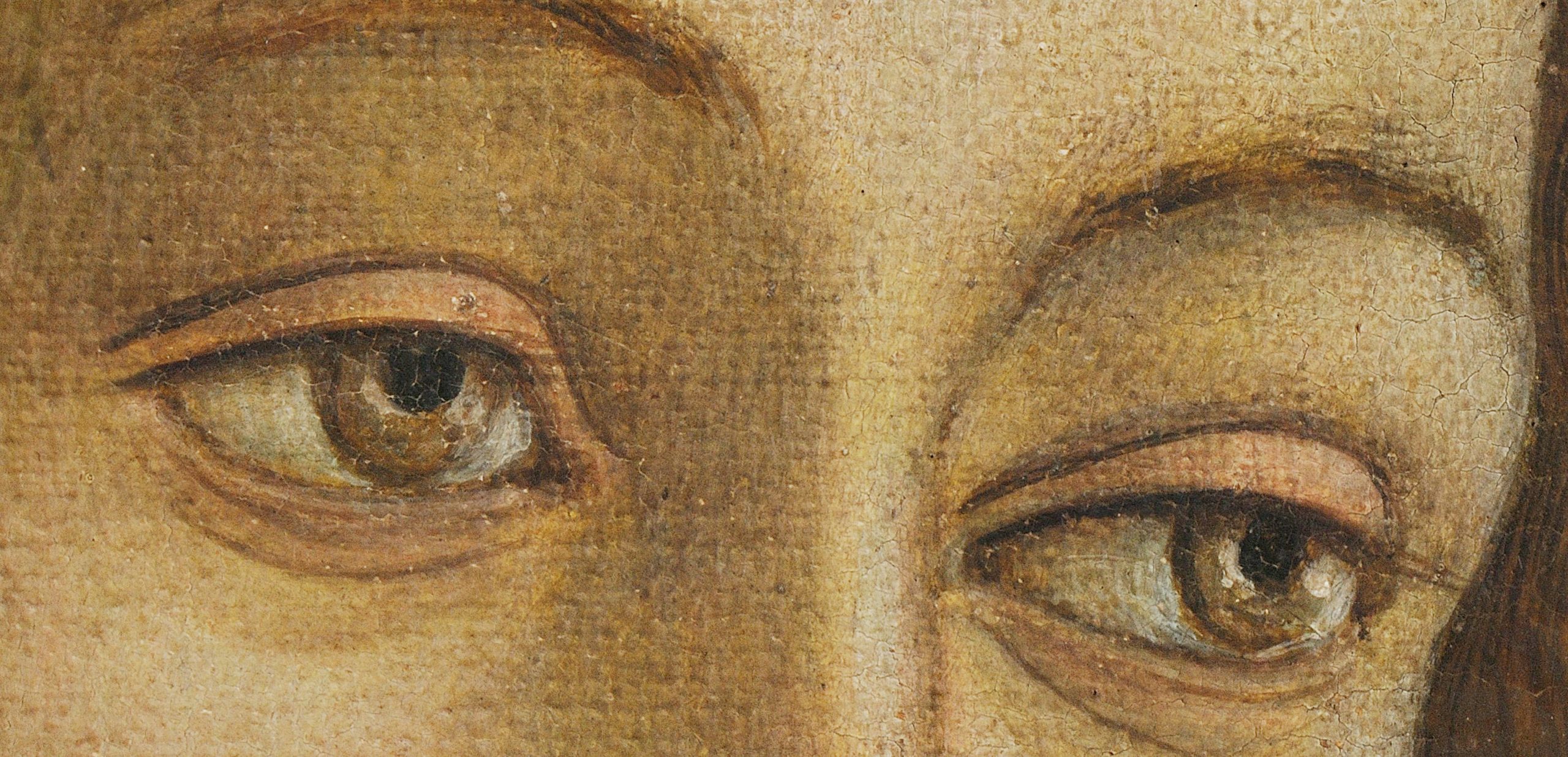
Courtesy: By Sandro Botticelli – www.haltadefinizione.com, Public Domain, https://commons.wikimedia.org/w/index.php?curid=11848657
“Lenses” by Brooklyn based New York writer Leah Silverman (2014)
Science Fiction stories often feature the world in post-apocalyptic times; nuclear war had made life on Earth uninhabitable and other planets become the new home for earth’s survivors. In Ray Bradbury’s “All Summer in a Day” the earth is uninhabitable and life on the planet Venus has its challenges; the sun shines for one day every seven years. Lenses takes place in the future where humans live on a new planet above Earth. Almost everything on the new planet is made from glass and metal and is machine operated. Most of the story takes place in a hospital room where Grusha has her eye surgery.
How do geography and weather shape our personality? In a time of climate crisis what steps can be taken to restore the environment so that life on planet earth can continue? In Leah Silverman’s “Lenses” the main character Corrine is a surgeon and she agonizes in her role as a surgeon who must replace her friend Grusha’s beautiful eyes that “glisten beneath the light” with metal ones (“solid grey like the pupil less eyes of a rat”) so that she can withstand the heat and atmospheric changes of the new planet. Forced to colonize on a new planet that is barren and void of the natural beauty of planet earth, the story challenges readers to consider their own fate if they were in a similar position.
Excerpt: “Lenses” by Leah Silverman
“I am twenty-eight and was born on Earth. This is unusual nowadays, I know, but my mother loved the green things of our planet and would never have survived in this world of metal and glass. I have been here for seven years. I started active duty late compared to those born here, but I am skilled, and good surgeons are so necessary these days that there is no room to complain.
If I were to look down and to my left see the planet though the soldiers on the surface are invisible from this height except to the bases’ sensors. We are above the planet’s day side though it is night up here, and in a few hours the first of the day’s wounded will arrive. It is hard to imagine men and women fighting and dying here. I think’s it’s because it is such a bright yellow colour, reflecting the light of the stars.
Level Two is where they send the patients who are the least wounded. Those who only need prosthetic limbs implanted in their already cauterized stumps, for example, or computer chips in their heads to replace the destroyed parts of their brain. Recently, it has become standard practice to replace their eyes….
The soldiers who come back after a year there all have skins tanned a deep black, and hair bleached of almost no colour. The sun goggles they are issued are unbearable because in the heat, and in the light their eyes become useful very quickly. Without the new eyes they would all go blind” (Silverman, “Lenses” p. 1-2 )
For information about the writer Leah Silverman, please open the link here.
Related Texts:
“The Star” by Arthur C. Clarke (1917-2008)
*A group of space explorers returned from a remote solar system. They discover the remains of a once advanced civilized (similar to Earth) that had been destroyed when its star went supernova. The chief astrophysicist is a Jesuit priest who has a crisis of faith when he realizes that Earth may be headed for a similar fate to destroyed civilization.
2001: A Space Odysseyby Arthur C. Clark (1968) .
Collected Short Stories of Arthur C. Clark: Internet Archive:
Science Fiction texts, please open the link here and here.
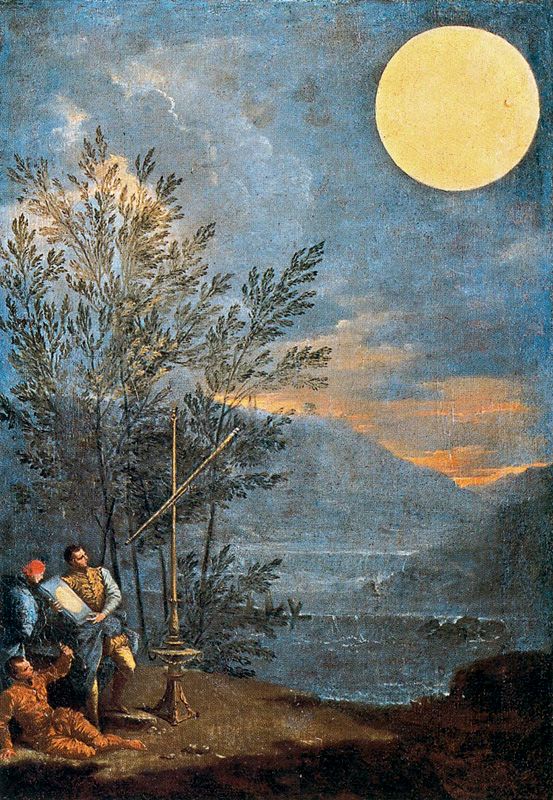
Courtesy: By Donato Creti – Pinacoteca Vaticana, Public Domain, https://commons.wikimedia.org/w/index.php?curid=48553211
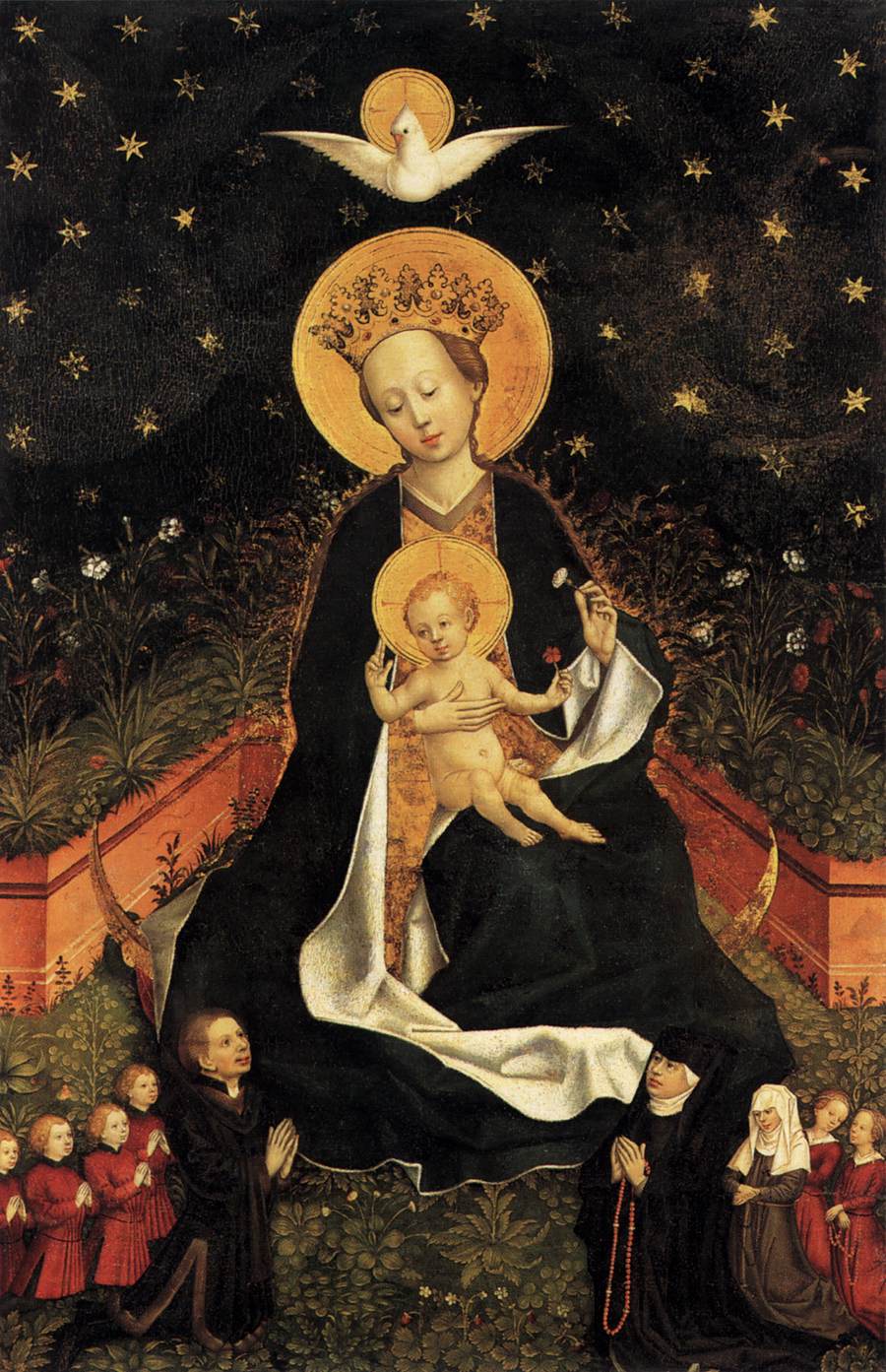
Courtesy: By Unknown Master, German (active 1450s in Cologne) – Web Gallery of Art: Image Info about artwork, Public Domain, https://commons.wikimedia.org/w/index.php?curid=15418182
The Rise of Personal Robots

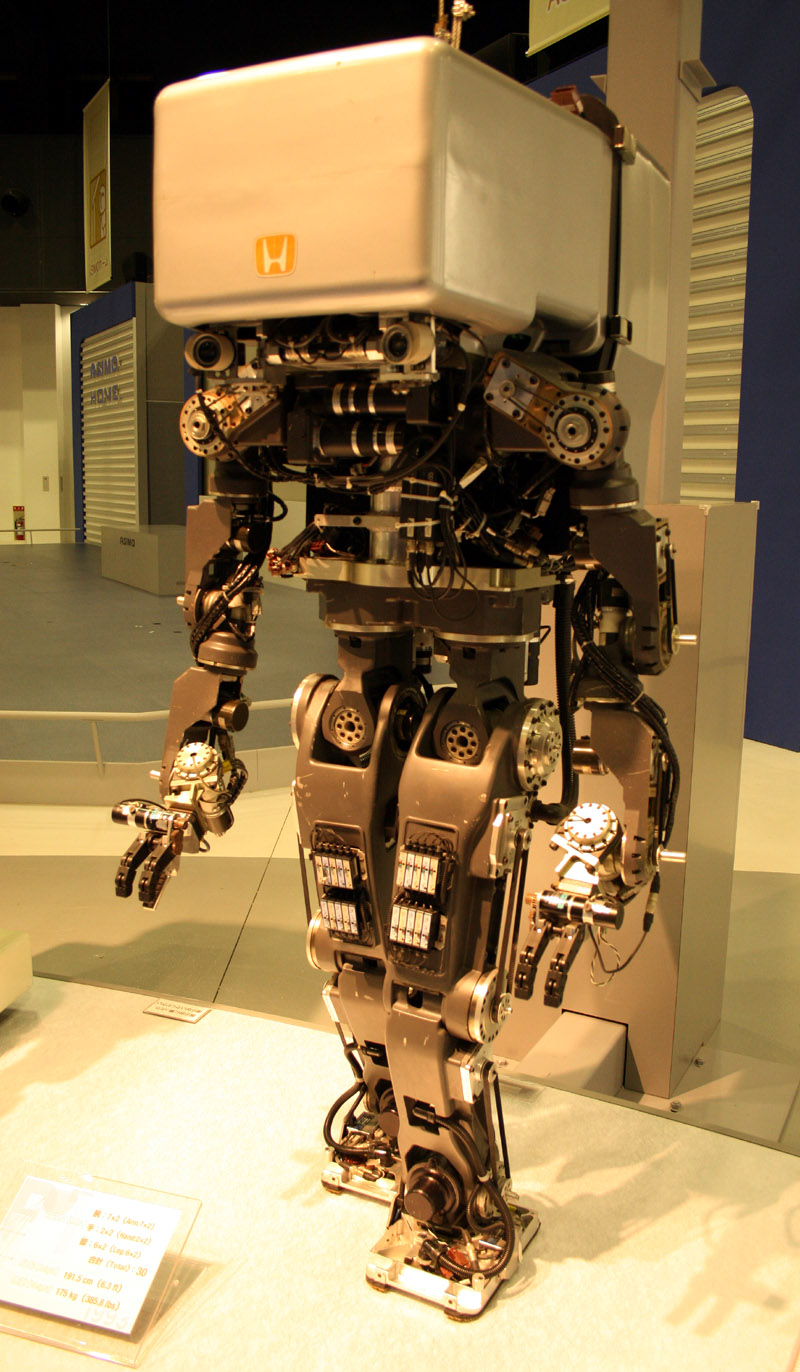
Klara and the Sun (Excerpt) by Kazua Ishiguro, Alfred A. Knopf, 2021.
In his futuristic novel Klara and the Sun, Kazuo Ishiguro (2021) creates the character of Klara, an artificial friend (AF) with extraordinary powers of perception. Klara’s growing level of consciousness and her human –like quest to find truth and love in a world where technological advancements, biogenetic engineering, and structured living takes a precedence over love, loyalty, empathy, and belonging. Ishiguro raises fundamental ethical questions about the nature of friendship, family, and love in a rapidly transforming world. Josie and her mother are searching for a new AF and Klara hopes to find a good home that would appreciate her qualities of empathy and awareness. In the novel, we learn that Josie had been genetically enhanced (the process of “lifting”) and modified to enhance academic performance. Little regard is given to the serious side effects of such procedures.
Like Kurt Vonnegut’s “Harrison Bergeron,” Ishiguro’s dystopian future challenges readers to explore the ethical boundaries of technological “advancements.” How advanced are we as a world when war and conflict continue to be pervasive? Have moral and spiritual development “advanced” in parallel ways with technology or, does there appear, as some scientists and philosophers suggest, to be an inverse proportion of moral intelligence and technology? How dependent are people on technologies today? Which technologies do you consider helpful? Are there other technologies that you consider harmful or potentially harmful? Where can we draw the line between harm and safety? How do we navigate the ethical boundaries of a world where Artificial Intelligence may pose new threats to human life? How can AI be used in ways that would help restore planetary health? What safeguards are needed for AI? Ishiguro’s novel can be read in conjunction with related Science Fiction stories and articles.
Please click on the links below for additional teaching and learning resources:
Related Resources about Artificial Intelligence, Implications for the Future, and Moral Boundaries
Artificial Intelligence -Related Texts
“Digital Teachers” (Drs. Douglas Newton and Lynn Newton)-Frontiers in Education
Interview with G. Hinton,AI Professor (University of Toronto): The Dangers of AI.
Ishiguro, K. (2021). Klara and the sun. Alfred A. Knopf. To read a review of this book please open the link here.
Scientific American Article: Dangers of Artificial Intelligence
“The future of AI is chilling” by Jonathon Freedland (2023). The Guardian, UK.
https://en.wikipedia.org/wiki/Category:Short_stories_by_Arthur_C._Clarke
‘Yeah, we’re spooked’: AI starting to have big real-world impact, by Stuart Russell, The Guardian, Oct. 29, 2021.
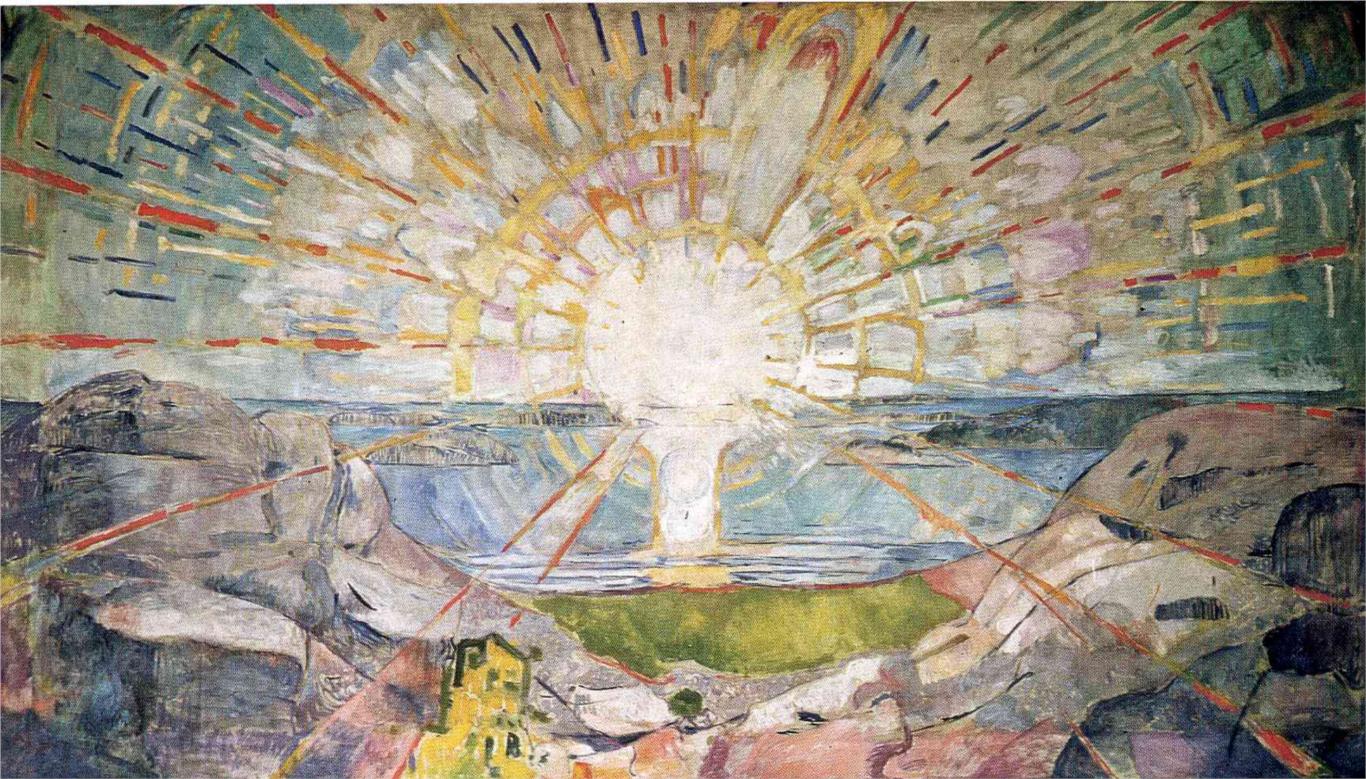
Courtesy: By Edvard Munch – The Athenaeum: pic, Public Domain, https://commons.wikimedia.org/w/index.php?curid=37890990
Reflections on “The Sun” (Christian Gierløff, 1879-1962)
“For most of day we were lying around, overwhelmed by the sun, in deep sand dunes right down by the edge of the fjord, between the big boulders, and letting our bodies drink up all the sun they could bear. No one is bothered about swimming costumes here, the gentle gusts of a warm July wind are the only fabric between us the sun.”
“This is how Christian Gierløff, a close friend of Edvard Munch, described some scorching summer days he shared with the artist in 1904. One can almost feeling the live-giving force of the sunbeams on one’s body when reading his words. One may have a similar experience when encountering Munch’s monumental masterpiece The Sun, which depicts a glowing sunrise over the rocky archipelago off Kragerø.” (Retrieved July 23, 203 The Munch Museum, Oslo, Norway. https://www.munchmuseet.no/en/our-collection/between-us-and-the-sun/#:~:text=Munchmuseet%20owns%20several%20versions%20of%20The%20Sun%2C%20including,men%20and%20women%20reach%20up%20towards%20the%20light.)
To read curator Ute Falck’s essay “Between War and Neutrality” and interpreting “The Scream” by Edvard Much, please open the link below. – Munchmuseet
https://www.munchmuseet.no/en/our-collection/a-reading-of-the-scream-on-day21-of-the-war-in-ukraine/
A Comparison and “Reading” of Two Paintings by Edvard Munch
The curator of the Munchmuseet (Munch Museum) in Oslo, Norway challenges viewers to look more closely at two of Edvard Munch’s paintings. Ute Falck compares two of Edvard Munch’s paintings in the context of war and violence. What differences do you see when you look at the two images? What message is the artist Edvard Munch sending? Can a painting be a catalyst to thinking differently about issues related to war and peace? How can each person play a part to encourage cultures of peace? What role might art and the imagination play?
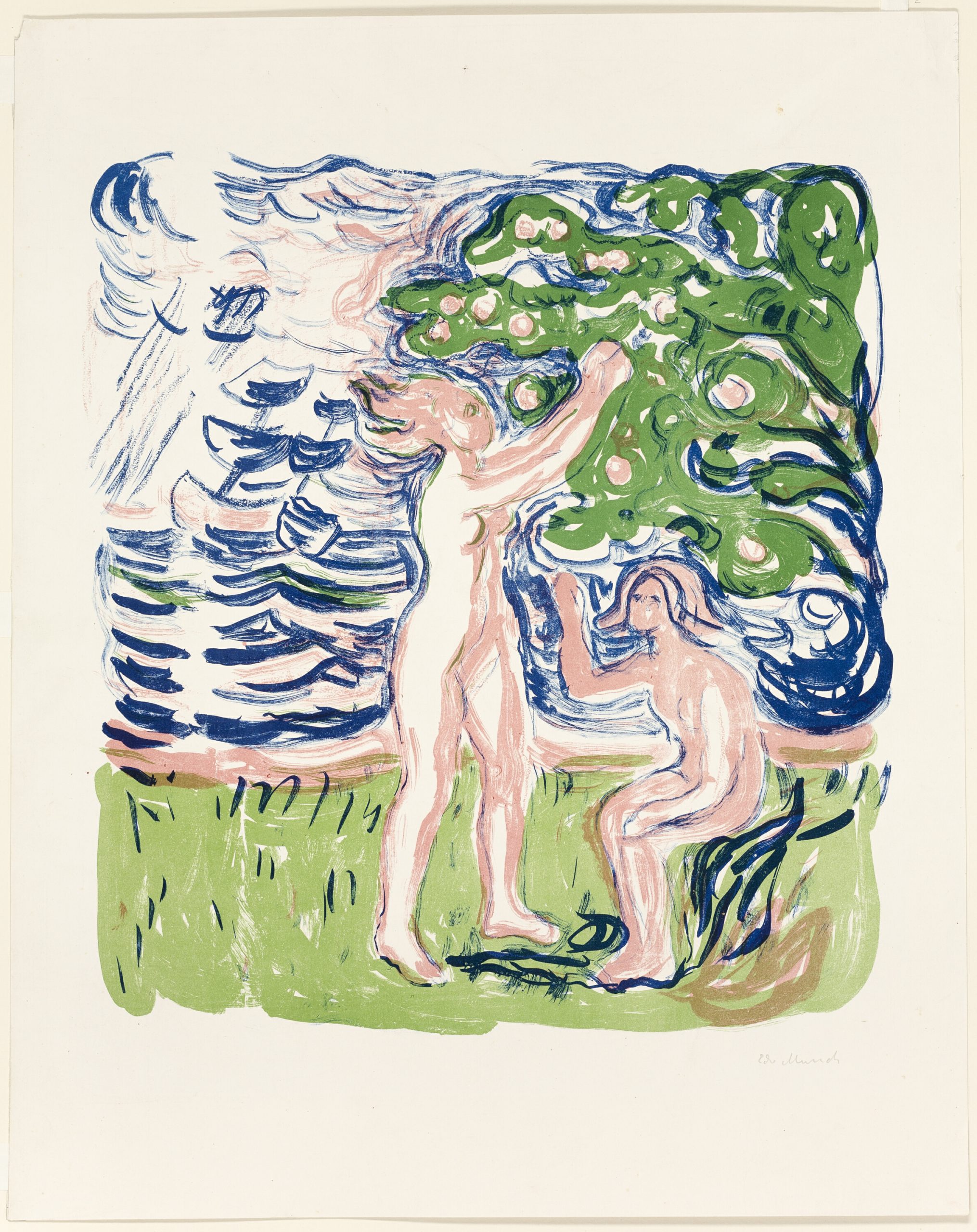
Courtesy: Robert A. Waller Fund. “https://www.artic.edu/artworks/72685/neutralia” is licensed under CC0 1.0.
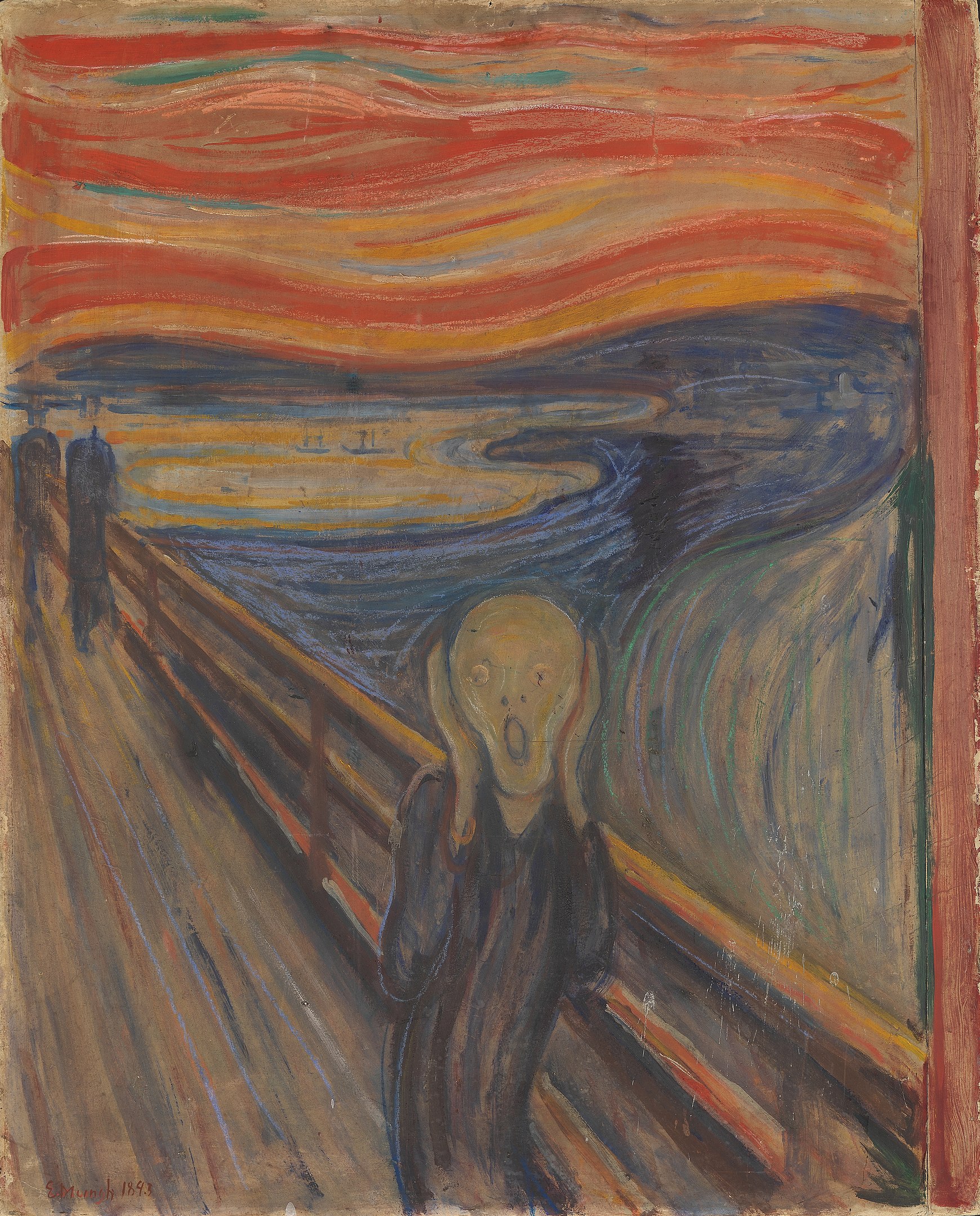
Courtesy: By Edvard Munch – National Gallery of Norway 8 January 2019 (upload date) by Coldcreation, Public Domain, https://commons.wikimedia.org/w/index.php?curid=69541493
“Neutralia” Poster Detail by Ute Falck
Art can be a catalyst to critical and creative thinking. Art can challenge, provide, and unsettle conventional perspectives and ways of knowing. Ute Falck (2022) explains that the great Norwegian artist Edvard Much lived during a time of multiple disorienting dilemmas and catastophes: war, pandemics, and economic crises that brought forth tremendous suffering and tragedy. She explains that while Munch was “acutely aware of what was happening around him and in the world, his art is by and large remarkably unpolitical. At least so it seems.” (Falck, 2022, Munch Museum). Munch’s art, Falck notes, challenges viewers to reflect on their own perspectives about life, war, and peace. What are your thoughts about each painting? To what extent do you agree with Falck’s insights?
From War to Neutrality: Ute Falck, Curator of the Munch Museum
“The poster shows in the foreground two women picking apples. The seemingly innocent motif is a reoccurring subject in Munch’s oeuvre, and he employed it, for example, for the decoration of the University Aula. Munch enjoyed playing with biblical references, such as the story of Eve tasting the forbidden fruit from the tree of knowledge. Here, the paradisiacal scene is placed by a shoreline, the background giving the view free onto a sailing ship struggling in stormy seas.
Curiously, the women in the foreground are not aware of the drama unfolding in the background. Having their backs turned towards the sea, they carry on with their task in happy unison. The poster is catalogued under the title Neutralia, which gives us a hint that there is more room for interpretation, as does the date of creation. In 1915 the War (later to be known as the First World War) was raging through Europe, presenting mankind with atrocities of previously unheard proportion. Already in 1915 it was clear that this war was not to be over soon, as initially widely believed. The general euphoria had already subsided, and the cruelties of the war were brought into every home by new technologies and mass media.” (Ute Falck, 2022, The Munch Museum).
A Comparison of “The Scream” with “Neutralia” by Ute Falck (2022)
“In contrast to Neutralia, the drama is happening here in the foreground, right in front of our eyes. Whatever is happening, it is so large, so loud and so violent that everybody should notice it – no doubt about it. But instead of turning around and coming to aid the person in the foreground, the two men in the background continue their chosen path. Full of ignorance, they leave the tormented figure alone and behind. “ (Ute Falck, 2022).
Before we know it, Munch has put us in the role of an observer with full view onto the whole situation. He makes us see how someone can undergo great horror, angst and pain, whilst others continue their lives.
It is as if Munch is challenging us: would we dare to help, or would we also rather keep distance and walk by? Just now these questions are more pressing than ever: there is war in Europe and humanity is crying for help – what do we do now?”
(Ute Falck, March 18, 2022. Between War and Neutrality: A reading of Edvard Munch’s “The Scream” – ).Munch Museum.
Excerpt from: “All Summer in a Day” by Ray Bradbury (1950)
“All Summer in a Day” was written in 1950 at a time when scientists had limited knowledge about the planet Venus. Ray Bradbury’s imagination creates the possibility of what the topographical terrain and climate might be like. We know more about distant stars and planets as a result of technological advancement but we still are limited in our knowledge of existence of life in other galaxies, both near and far. What knowledge do we have about life on other planets today? What are the promises, possibilities, and potential problems about life on other planets?
As you read “All Summer in a Day” you can reflect on some of these questions:
How does weather and geography impact your mood? What might it be like to live on a planet where the sun shines only once every seven years? Bradbury explores the themes of bullying, isolation, and forgiveness in his eloquently written short story.
“All Summer in a Day” by Ray Bradbury Story Excerpt:
“It had been raining for seven years; thousands upon thousands of days compounded and filled from one end to the other with rain, with the drum and gush of water, with the sweet crystal fall of showers and the concussion of storms so heavy they were tidal waves come over the islands. A thousand forests had been crushed under the rain and grown up a thousand times to be crushed again. And this was the way life was on the planet Venus, and this was the schoolroom of the children of the rocket men and women who had come to a raining world to set up civilization and live out their lives.
“It’s stopping, it’s stopping.”
“Yes! Yes!”
Margot stood apart from them, from these children who could ever remember a time when there wasn’t rain and rain and rain. They were all nine years old, and if there had been a day, seven years ago, when the sun came out for an hour and showed its face to the stunned world, they could not recall. Sometimes at night, she heard them stir, in remembrance, and she knew they were dreaming and remembering gold or a yellow crayon or a coin large enough to buy the world with. She knew they thought they remembered a warmness, like blushing in the face, in the body, in the arms and legs and trembling hands. But then they always awoke to the tatting drum, the endless shaking down of clear bead necklaces upon the roof, the walk, the gardens, the forests, and their dreams were gone.
All day yesterday they had read in class about the sun. About how like a lemon it was, and how hot. And they had written small stories or essays or poems about it.
I think the sun is a flower.
That blooms for just one hour.
That was Margot’s poem, read in a quiet voice in the still classroom while the rain was falling outside…”
For the complete short story “All Summer in a Day” please open the link here.
To read lesson plan Ideas for “All Summer in a Day” please open the link here.
Learning Objectives
Students can reflect and write about the way in which varied Science Fiction writers develop the setting, plot, characters, and conflicts in their stories. Learners can also:
1. Create a prequel or sequel for one of the science fiction stories identified in this section.
2. Design a poster for one of the short stories or create a visual essay that highlights key events in one of the science fiction short stories.
3. In a persuasive essay or speech assess and analyze some of the advantages and disadvantages of Artificial Intelligence.
4. Can a robot replace human companionship? What are your thoughts about the rise of personal robots? To view a Ted Talk about personal robots please open the link here.
5. Compare/Contrast any two science fiction short stories. What similarities and differences can you identify and describe in terms of the way each writers creates the setting, characters, plot, conflict, theme, and so on. To review the elements of fiction please open the link here.
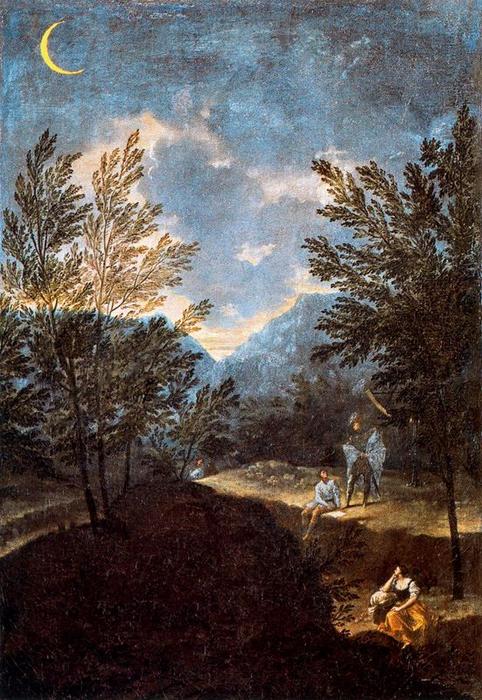
Courtesy: By Donato Creti – Pinacoteca Vaticana, Public Domain, https://commons.wikimedia.org/w/index.php?curid=48553212

